2964Views 24Comments
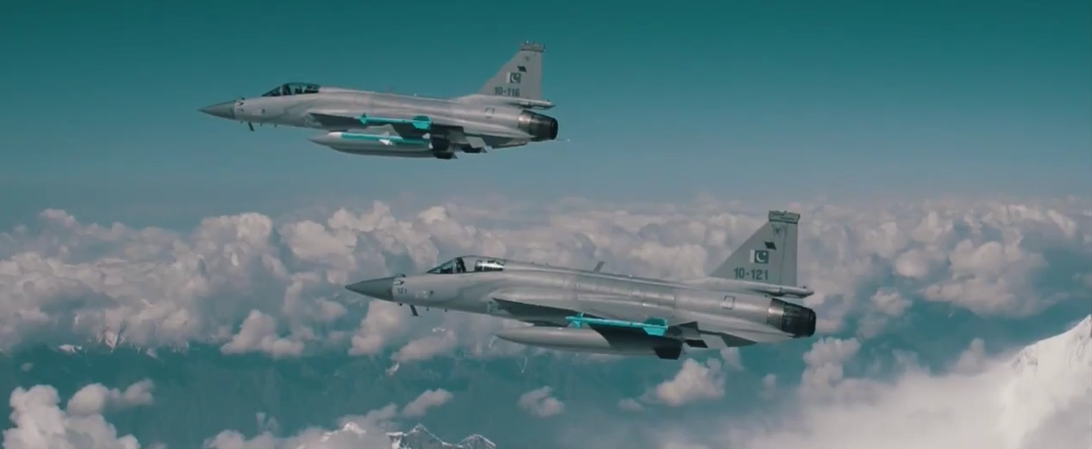
JF-17 Block-2 and Block-3 Details Confirmed
The information below will not be new to most Pakistani defence enthusiasts, especially those following the development of the JF-17 Thunder, the Pakistan Air Force (PAF)’s new mainstay multi-role fighter. That said, all of what you are about to read on this article is verified information acquired through a Defence Industry Bulletin interview (during the 2015 Paris Air Show) of Air Commodore Khalid Mahmood, the Vice-Director of the JF-17 program and its sales and marketing manager. Though I will not repost the interview here, I will note and discuss the key details.
There were 50 JF-17s in use by the PAF as of June 2015
AC Mahmood told Defence Industry Bulletin (DIB) that the PAF had 50 JF-17s in service with three operational squadrons. He was referring to the No. 26 and No. 16 squadrons based out of Peshawar Air Base, the third unit he was referring to is the Combat Commanders School (CCS). CCS is the PAF’s training arm for experienced pilots who have shown considerable promise and aptitude for assuming operational leadership posts (such as commanding a fighter squadron). AC Mahmood also noted that a fourth squadron would be raised “within [the] year”, this would be the recently re-equipped No. 2 squadron operating from PAF Masroor.
Alongside the operational units there are also 10 JF-17s committed for testing and development, these are in use in Pakistan as well as in China. As one might imagine these units are being used for testing new subsystems, such as radars and avionics, among other things.
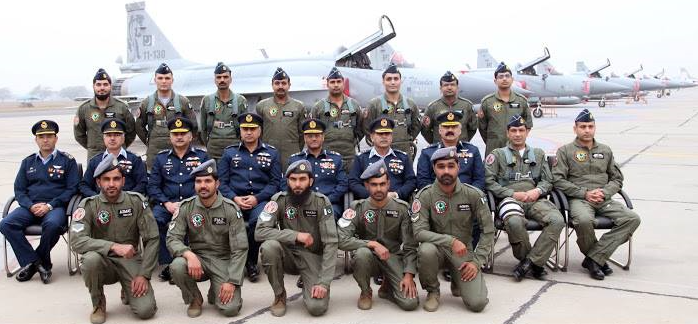
JF-17s have been used in combat
AC Mahmood confirmed to DIB that the JF-17 had seen use in the Federally Administered Tribal Areas (FATA), where “it has employed both guided and unguided munitions.” In other words, the JF-17’s precision-strike capabilities have been tested and put to use. I imagine the JF-17s were primarily using laser-guided bombs, likely LT-2, but I would not discount satellite-aided LS-3 and LS-6 munitions either (see this piece for an overview of the JF-17’s munitions inventory). It is likely that the JF-17’s LGBs have been paired with the Chinese WMD-7 targeting pod (Defense News).
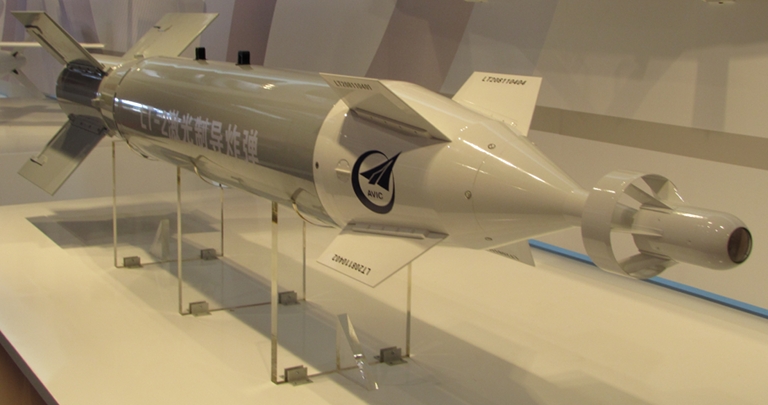
Indigenous data-link network in use?
Although an ancillary comment, AC Mahmood stated that “a national solution” was being used to connect the JF-17 to “on and off-board sensors.”
If you are not familiar with the concept, a data-link network basically enables various assets to communicate and exchange information from their sensors in near real-time. For example, an Airborne Early Warning and Control (AEW&C) aircraft could pick up incoming enemy aircraft and, nearly instantly, pass that exact information (with continuous updates) to friendly fighters. The network environment gives your side a live “picture” of the battlefield situation, enabling every friendly actor on the field to have an accurate and constantly up-to-date understanding of the situation.
The PAF uses the American Link-16 system with its F-16s, though it is not entirely clear if the Erieye AEW&C is equipped with Link-16. That said, it should be noted that Saab listed Link-16 (along with Link-11 and an “in-house data link”) as an option.
Besides mentioning that “the national solution” was working “okay”, the system in question was not elaborated upon. It is no secret that the JF-17 was slotted to be a network-centric platform, but it was not clear exactly how the PAF would achieve it. Would it import a data-link network that could be interoperable with Link-16? Or would it use two completely separated solutions (which could be relayed between one another by AEW&C)?
The use of a “national solution” can be a significant thing, assuming what is meant by “solution” is the actual network itself. I personally would consider this feat to be of paramount importance given how network-centric warfare is the norm in modern warfare.
PAC produces 20 aircraft a year for the PAF
Pakistan Aeronautical Complex (PAC) is on-track to produce 20 JF-17s (approximately a little more than a squadron) a year for the PAF, but the rate can be increased to 25 a year. It seems the gap was left in anticipation for export orders.
The workshare agreement in effect between China and Pakistan permits PAC to produce 58% of the airframe and subsystems (the engine is imported from Russia). I imagine (and hope) the balance will gradually shift more to the Pakistani side as PAC becomes more capable.
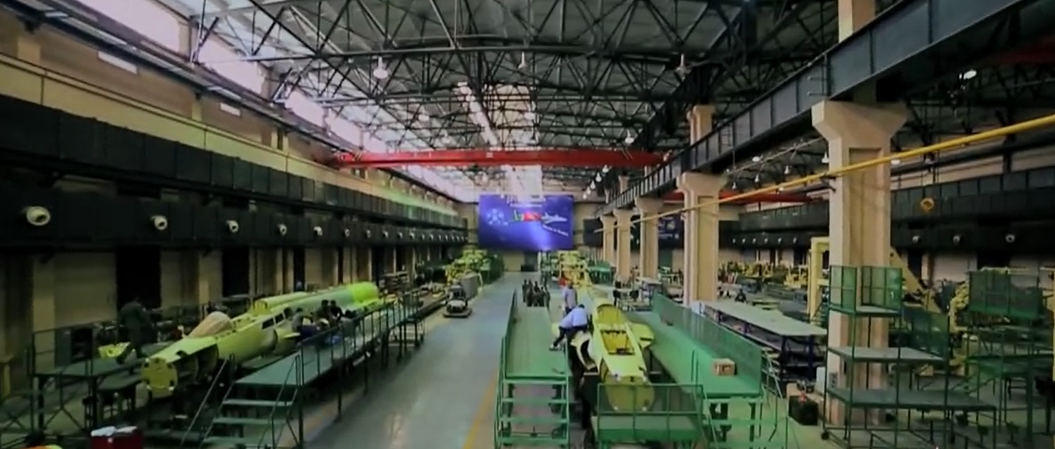
JF-17’s maritime role explained
AC Mahmood confirmed that the No. 2 squadron from Masroor would be equipped for anti-ship warfare (AShW). However, there are some caveats, primarily owing to the JF-17’s inherent structural limitations. The C-802 anti-ship missile (AShM) in use with by PAF is a heavy missile, and as a result, the JF-17 will carry just one AShM in a mission, with the remaining hard-point stations reserved for fuel-pods and air-to-air missiles.
I suppose in-flight refuelling could help address this issue somewhat by alleviating the needs for the tanks, but this does not change the reality of the JF-17 being a lightweight fighter. The need to address the maritime theatre with a heavier and longer-range fighter was one of the purported reasons why the PAF was reportedly looking at the Sukhoi Su-35 from Russia.
Two-seat JF-17 on the way
The twin-seat variant of the JF-17 is under development and will be available as an operational conversion or training unit for prospective customers. However, AC Mahmood did not have much more to say about this variant. In other words, the two-seater is just poised be a training unit, not a specialized system for strike or dedicated electronic warfare. I imagine the reason, again, has to do with the reality that the JF-17 (at least the Block-1 and Block-2) is a lightweight fighter.
What is JF-17 Block-2?
The JF-17 Block-2 airframe is virtually identical to that of the Block-1.
The only external difference between the two is the Block-2’s incorporation of a fixed in-flight refuelling probe (which will be in effect from the 24th or 26th Block-2 aircraft produced). According to AC Mahmood, the JF-17 did not have enough room for a retractable probe.
The probe is being sourced from a South African company and is being integrated onto the starboard (i.e. right) side of the fuselage. In-flight refuelling is an important addition, it will enable the JF-17 to loiter for extended periods of time, utilize hard-points otherwise used for fuel pods for weapons, and travel without having to land and refuel on the ground as frequently as today (for reference the JF-17 unit made a total of six stops on their way to the Paris Air Show). The PAF’s current aerial refuelling cadre is composed of 4 IL-78 Midas tankers.
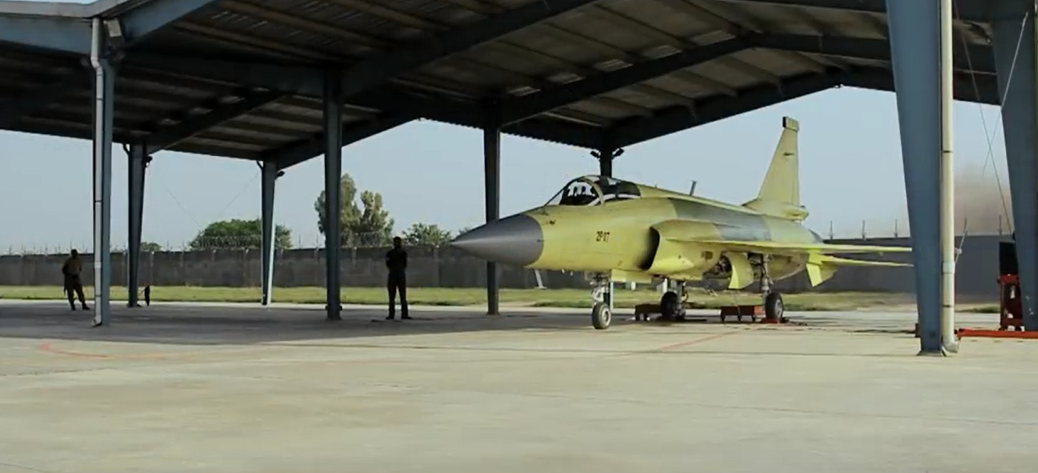
Although the refueling probe was the only external addition, the PAF is contemplating the idea of adding hardpoints under the fuselage chin area, which would be used for dedicated targeting pods such as the WMD-7.
Internally the Block-2 is equipped with an improved electronics suite. This includes the avionics and electronics warfare (EW) suite (which may involve the Spanish firm Indra) as well as an updated version of the KLJ-7 radar known as KLJ-7 V2. That is right, AC Mahmood explicitly mentioned the KLJ-7 V2. If you have been following the JF-17 through defence enthusiast circles you will have come across the V2 quite a bit, but mostly through independent defence news sources. It is not entirely clear exactly what range improvements were wrought with the KLJ-7 V2, but it could be (though not confirmed officially) in excess of 100km at 3m2 RCS.
Block-3 AESA, HMD/S and IRST studies confirmed
Although the JF-17 Block-3 has been discussed in detail, including on this very website, it helps to know exactly what has been confirmed and what has not.
AC Mahmood has confirmed that an Active Electronically Scanned Array (AESA) radar is being pursued, with the Chinese vendor Nanjing Research of Electronic Technology (NRIET) among the options being studied. The inclusion of an AESA radar would be a significant jump for the JF-17 (see here as to how and why), but a few important assumptions need to be made about the JF-17 Block-3, especially if the PAF intends to make it a substantive improvement over Block-2.
One of the general challenges with AESA radars is the impact these radars can have on weight and power consumption in the fighter. If the PAF intends to include AESA radars with the intention of maintaining or even improving the radar detection and engagement range of the Block-2, it will need a lighter airframe and more powerful engine.
While AC Mahmood did not confirm that a new engine will be used on JF-17, he did confirm that the PAF was studying its options, and that “the best equipment will find its way into the aircraft.” I think in the end the PAF would choose either the Russian RD-93MA or Chinese WS-13.
In any case, I firmly hope the Block-3 makes much greater use of composite materials and a new engine, these essentials would set up the Thunder to be up to task for most of the aerial threats facing the PAF. A larger and more powerful aircraft might also open up the doors to special warfare variants, such as strike and electronic warfare.
The PAF is also looking at its Helmet Mounted Display/Sight (HMD/S) and Infrared Search and Track (IRST) options. Again, specific details are non-existent, but I did discuss what might be the case in regards to the HMD/S. As for the IRST, this would be an interesting route for the PAF, I will direct you to Tyler Rogoway of Foxtrot Alpha for a clear and succinct explanation of IRST systems (note I have gone on a pretty big tangent here, if you are just interested in knowing what Air Commodore Khalid Mahmood said, then you can skip this section):
At its most basic level, an Infrared Search and Track system is an infrared energy detection device that is usually fitted in a spherical glass enclosure on the front of a fighter aircraft. The systems scans the airspace ahead of the jet for heat signatures caused by aircraft engines and/or skin friction caused by the aircraft flying through the air. Once the system detects a target, it usually has an ability to lock that target up, or a way to facilitate the crew in slaving their fighter’s radar onto the point in space where that heat signature exists in order to attempt a radar lock. Modern variations of IRSTs can search out to intermediate ranges, track multiple targets and even engage other aircraft using its telemetry data alone.
It should be apparent from the explanation above that IRST is in effect an alternative to using radar for aerial detection and engagement. Why would not use their radar? Well, radars are susceptible to detection by an opposing aircraft’s radar warning receiver (RWR) and electronic jamming by EW suites (and potentially even AESA radars). IRST can resolve that issue, and modern air forces around the world have caught on, particularly the Europeans (the Dassault Rafale, Eurofighter Typhoon and Saab Gripen all include IRST). The Americans are also pushing forward with Lockheed Martin’s Legion pod.
For the PAF I think the inclusion of IRST on JF-17 could be a game changer in some respects. By enabling the pilot to switch-off his or her radar and still engage an enemy at extended ranges, IRST offers the JF-17 a reasonable opening against genuinely advanced fighters. It would allow the JF-17 to track and engage an opposing fighter without giving away its position, in addition to greatly dampening the effect of the opposition’s EW jamming.
Returning to my earlier point about the paramount importance of a homegrown data-link solution, I am going again refer to Foxtrot Alpha for a very good point about how IRST can mesh with modern network-centric practices:
If the battlespace that the friendly fighter with the IRST installed is fighting in is ‘networked,’ where a whole range of different assets (other fighters, AWACS, ground or surface radars and so on) are sharing a common sensor “picture” via data-link, that IRST equipped fighter could still maintain a synthetic radar “picture” of airspace around it while keeping its radar turned off. This would allow that fighter to retain an incredibly high state of situational awareness, while still remaining electromagnetically silent regardless of if the enemy turns on their radar at all.
For instance, an F-16 with a Legion Pod and a Link 16 data-link terminal installed could use an E-3 Sentry’s radar picture to intercept an enemy fighter that is too afraid to turn on its own radar. Once in range of its IRST it can then prosecute the intercept and kill on its own, including a final weapons-grade firing solution. Basically, third-party sources are supplying the F-16 with the ‘big picture’ and once it is looking in the right direction it can use its IRST to shrink that picture down and enhance its targeting fidelity to a lethal level without giving away its own position via using its radar.
The basic point being made by Foxtrot Alpha is that an AEW&C, such as the Erieye or Karakorum Eagle in the PAF, could use its very powerful radar to detect enemy aircraft, and then it could pass that data to the IRST-equipped JF-17. The JF-17 at this point would have its radar switched-off (making it more difficult for the opposition to know if it is around), but it would know – in real-time – about the incoming threat from the AEW&C.
When the time for engagement comes, the JF-17 pilot can launch the SD-10 to reach preprogrammed coordinates or waypoints on the way to its eventual target, and once in position, the SD-10 can switch-on its radar-seeker and seek the target. The window for escape for the enemy could be very short (as the RWR would only pick up a radar signal from the missile when it hits terminal stage). Alternatively, the PAF could even take the MICA-IR route by pairing the SD-10 with an infrared seeker, thereby enabling it to be a completely silent threat.
At this point I should probably just recommend that you read Foxtrot Alpha, especially the IRST piece (here) as it does a superb job of capturing the key advantages of this system in modern air warfare. In the case of the JF-17, this could be an effective means of defence against the Indian Air Force’s mainstay, the Su-30MKI. Granted, we are not talking about an absolute advantage here, but the combination of IRST, a data-linked network involving AEW&C (capable of detecting enemy fighters at very long ranges) and suitable munitions (such as SD-10 or an IR-tipped version of it) can form a credible defensive position. Once again, I refer to Tyler Rogoway:
IRSTs can not only work well for US and allied nations combat aircraft, they can also work well for an enemy that has much less advanced fighter aircraft, but has upgraded those fighters with relatively cheap new subsystems. Electromagnetic silence, when paired with other aircraft using dissimilar tactics, such as active radar scanning, data-links and jamming, against a more advanced fighter force, can give that less advanced force a fighting chance at having a number of aircraft “break through” the more advanced enemy’s fighter screen. If that same less advanced force were equipped with IRSTs, they could work more independently with a greater chance of survivability against a non-IRST equipped, but more advanced fighter aircraft.
The big risk here is that countries can take old and fairly crude fighter aircraft and bolt on some pretty wicked systems, at relatively low cost, to help level the air-to-air playing field.
I expect the PAF’s approach to IRST will be very similar to what the U.S has done, i.e. find a suitable IRST pod and connect it to a hard-point (ideally the chin) station on JF-17. I do not think the PAF will opt for an integrated solution built into the airframe, the JF-17 is too small (which is the reason the PAF opted for a fixed in-flight refuelling probe). Moreover, a solution built into the airframe will add to the per-unit cost of the fighter, the PAF would probably prefer being able to buy the pods separately and allocate them according to the needs of specific JF-17 units.
Conclusion
Overall I think it is fairly apparent that the JF-17 is still managing to flow on-track (with JF-17 Block-2 in production), though I do wonder if the advances – and tandem cost increases – of the Block-3 will make matters a bit trickier for the PAF. That said, the potential at hand should not be underestimated.
EDIT: Adjusted bit about the Erieye using Link-16, not confirmed.

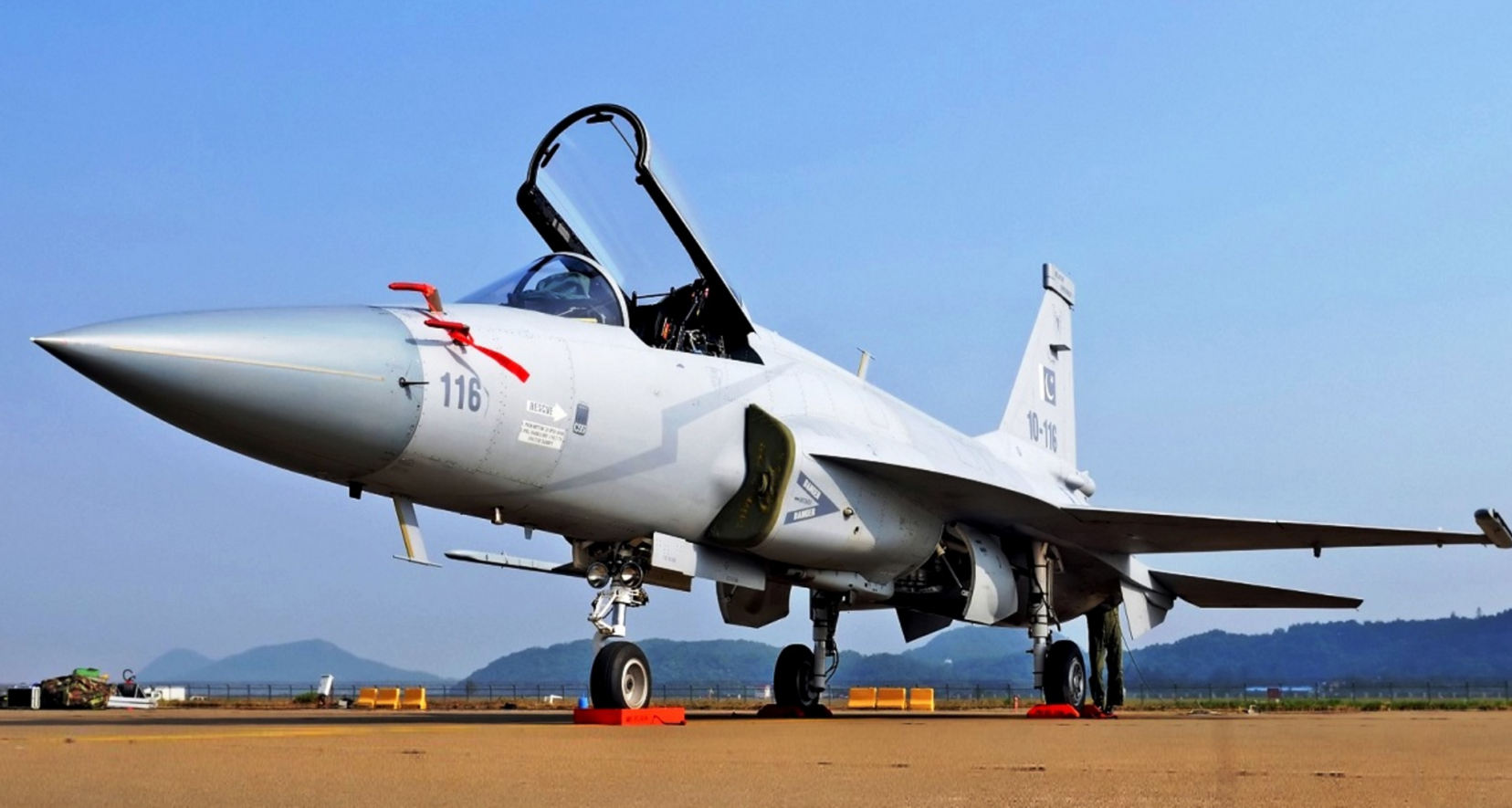
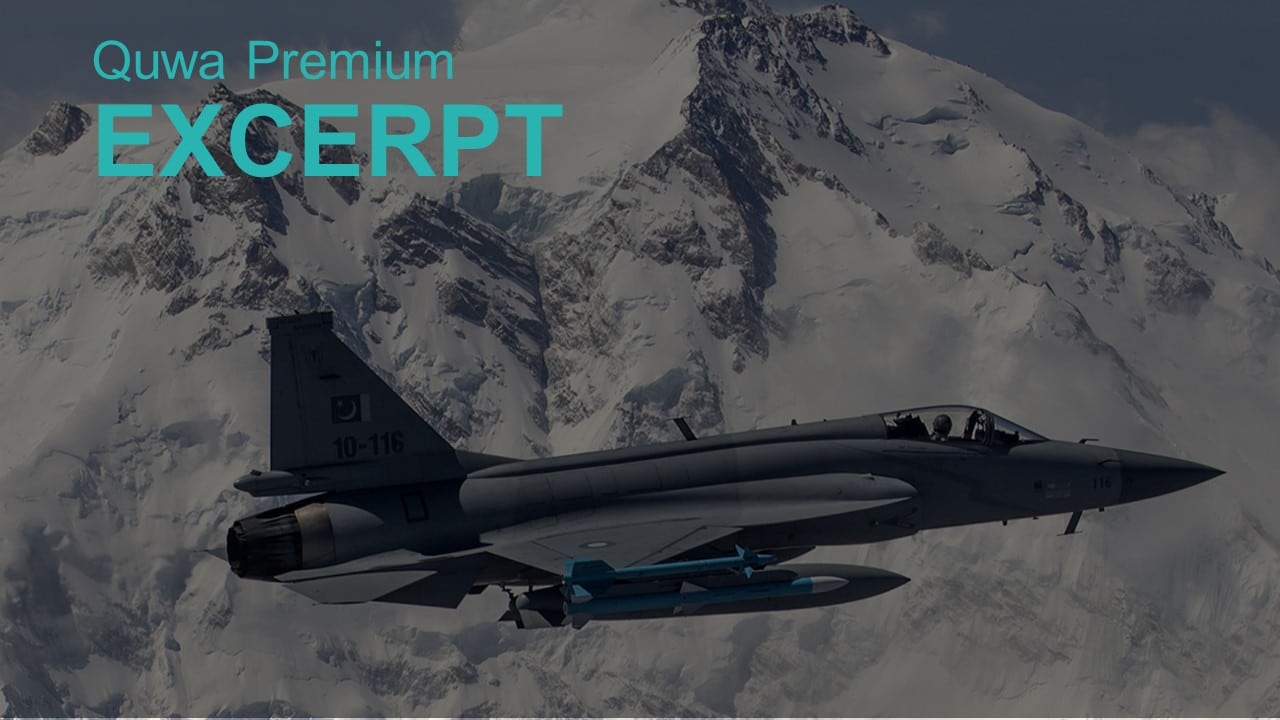
24 Comments
by Catalyst
Superb analysis. Optimistic about JF-17 project as a whole. The PAF and PAC people have done a superb job so far.
by jigsaww
its sad that JF-17s size is holding it back from becoming a full fledge mainstay fighter. PAF really needs to look it over again. Finances aside, there is a dire need to introduce a medium or heavy weight into PAF. It is over due for 5 years now. Otherwise PAF will be forced to push JF-17 over its limits in a battle zone. I believe that this is a mistake on PAF’s part. If Pakistan had seen another aerial battle with India somewhere in the 90’s, PAF would have definitely introduced a twin seater by now by actually experiencing this issue. There is no air force in the world, with the size and threats faced by PAF, that is relying on single engine fighters. The only air forces using single engine jets are forces that see peace time for most of the time, e.g. sweden, brazil, malaysia etc. I am not sure how it will work out, but PAF definitely needs to acquire the J-10C (AESA, IRST, HMD) equipped with out without the FC-31 and possibly work on re-designed JF-17 after block 3 with twin engine, larger air frame, better stealth features, and higher payload. The JF-17 currently has a very low endurance and fuel capacity.
We are currently stuck in:
Light weight category: JF-17s, F-7s, mirages
Medium weight category: F-16s
Heavy weight: Nothing
Whereas this should be how PAF look like:
Light weights: JF-17, F-7
Medium weights: J-10C, F-16
Heavy weights: FC-31, and SU-35 is sale goes on.
PAF definitely needs to introduce/finalise two new platforms by 2020, not one. The first choice should be SU-35 but as you pointed out rightly in your first analysis on SU-35 sale, it won’t become a reality because either PAF won’t change its mindset or Russia would simply not agree after the initial fanfare. The second choice should be J-10C or J-11 (though Russia still might block that sale too).
I believe PAF is too much focused on having FC-31 ready and introduced by 2025, but that is a decade away and there needs a stop gap jet in that time. FC-31 will always be required whether PAF employs J-10s or not.
I suspect that with LCA failing and indo-US relations getting stronger, India will by 2020 establish a deal with US to develop either the F-16s or F-18s locally in india, since by 2020 around 200 indian fighters will become obsolete and unable to be flown any more. Tejas won’t make it and US will tap into this need. PAF will need to counter this.
by saqrkh
Well said.
I think the rationale behind JF-17 in the beginning was to just have a light multi-role fighter, but there was an assumption – unfortunately – that Western fighters could still be sourced and freely used to handle other critical roles, like handling the IAF’s Su-30MKI, Mirage 2000s, MiG-29 and MMRCA.
Now it is plainly obvious that this is not the case and the PAF is basically pushing more onto the JF-17. I really don’t think the current Block-1 and Block-2 design is going to work with an AESA radar boasting more range and tracking/engagement capability than KLJ-7 V2. The PAF would either have to eschew AESA until the technology is light and efficient enough for use on JF-17 or it will need to develop a “Thunder NG” (akin to Gripen NG).
In other words, Block-3 may not just be a continuation of Block-1/2, but a new fighter designed from the ground-up to make use of AESA and IRST. They’ll need to enlarge the airframe, use a higher proportion of composite materials and ready a more powerful engine, e.g. RD-93MA. Heck, it might be a good opportunity to increase cockpit visibility and optical awareness as well.
This ‘Thunder NG’ would basically be closer to a medium weight fighter, but unless development’s been happening for the past 5 years, I’m afraid we won’t see this (if happening) until after 2020. But even if it were to come in later, it’d be a superb system to have in the Lo-end, the groundwork of this design would put it in the same category as Gripen NG, easily.
The alternative, which is also possible, is that PAF procures J-10B/C. But given the investment we’ve put into JF-17, it will be better (for our industry) to develop a new iteration of it.
by jigsaww
I agree. But given the short timeline on block 3, JF-17 block 3 may not see any or many airframe changes. What seems to be the case from the news coming in are major upgrades in AESA, IRST, HMD and possibly a new engine but there is nothing of the sort to radically change jets payload and airframe. I do not think PAF wants to fiddle too much until block 3 since PAF needs some kind of capability at the least in order to retire those ageing mirages and F7s. So that seems out of the question to see anything major on airframe in block 3. Still JF-17 block 3 will provide a neat punch in low to medium category.
I hope so it happens in block 3, but this really is something for airforce to think block 3 beyond. There have been new designs of JF-17 floating for a while now on the internet beyond block 3 and china seems to be interested in taking JF-17 further because of the potential it still holds as a light weight fighter for export. There is an MoU already signed for stealth variant. I strongly second your Thunder NG approach. PAF definitely needs to think on this line. T-NG is a need. This plane has huge potential. It needs to be put into category of Rafale and Eurofighter on its own. It has just too low endurance and loiter time as of now and 3 weapon stations are getting “wet” with fuel pods. I really hope PAF guys have thought it through to establish a twin engine JF-17 in number of 100 for PAF beyond 2020 having stealth profile and in size of Rafales. 20 years into the future, when 6th gen fighters will start getting fielded, we do not want be stuck in low end category.
by Navid Lahori
Twin SW-13 powered FC-31 Design was okayed by P A F,before Chinese embarked on the development.Pakistan will eventually build this machine
under licence.
by jigsaww
Hopefully.
by Muhammad Junaid
I really like your analysis Bilal Khan. Keep it up good work.
by saqrkh
Let’s hope. The JF-17 Block-3 hasn’t been frozen yet and we don’t know exactly when its development began. I hope this is one of those cases – like Prototype 04 – where work on it has been on for a while.
by jg
Will disagree in terms of logic for a twin engine fighter….the performance of even a slowing engine fighter is dependent upon the avionics on board and weapons capability……having said that with performance of F -16 and it’s avionics and BVR superiority over any indian fighter, the ball is very much in PAF court…..lets say…for example F16 s scored the first AMRAAM kill in 1993 by shooting down 2 Iraqi airforce mig25, a twin engine fighter, similarly, mig29 shit down by F16 s in Kosova. 1996 etc etc.
by jigsaww
i agree..but my point is not avionics here only…twin engine will help expand the airframe, thus carrying more hardpoints, and fuel…jf-17 also needs more power when all stations are wet. there is a reason why all high end fighter jets are now twin jet.
by jg
The PAF uses the American Link-16 system with its F-16s and its Erieye AEW&C.
FYI….erieye uses link 11 and hence there is no compatibility with paf f16s. And yes, PAF f16 do link up with NATO Awacs during international ex.
As for a national solution for link, it’s already under use on trial basis for past 5 years. Since paf fleet is using a common radio set, the national solution is operationalization phase.
by saqrkh
Are you saying the Erieye as a product just uses Link 11 or that only the PAF is uses Link -11 with it?
by jg
It’s the link that was already configured at time of delivery…
by saqrkh
And at the time Link-16 configuration was not possible? Saab lists Link-16 as an option for Erieye.
by saqrkh
@jigsaww:disqus
Haris Khan on PakDef verified a few interesting details.
1. “Block III will get a new nose job to get AESA”
2. “PAF admits that they believe that the payload of JF-17 is little on the lighter side. But they intend to increase while reducing the original weight of the aircraft using composite material and adding more multi mission weapons. The plan is to have CAP mission of JF-17 with six AAM.”
3. “AVIC said that they have developed a more powerful R-93 engine for twin-seater FC-1/JF-17 with A/B trust increased to 8,600kg. This engine will be available for JF-17 Block III.”
http://www.pakdef.org/forum/topic/10089-pakistan-air-force-related-discussion-jan-dec-2015/page-37#entry223281
I guess the idea of Thunder NG was sound after all!
by jigsaww
ah great…still, fingers crossed until the unveiling..
but really looking forward to seeing this coming true…
by saqrkh
If true then this basically means the older frames will be locked to Block-II, at least in terms of the radar (though adding HMD/S and a new EW/ECM suite should be possible). I think AESA is locked to Block-III or newer.
by jigsaww
hmm…lets see…but it should be soon now to unveil…
by Mateen Zaman
uth o jigsaw,loya comments,man
by jigsaww
what about IRST and HMD? is it under study or confirmed to be integrated? AESA is certain, i can see.
by Ashi
LCA is not failing it will have AESA radar , mid air refuelling and electronic suite with serial production and induction since 2017-18 and 2 squadrons of dasault rafale are also coming within 1-2 years
by jigsaww
2 Squadrons of Rafales coming within 1-2 years? I guess you forgot to mention india is also going to attack France if that does not happen.
Please do tell us the drug you are using. I can recommend it to some of your fellow citizens.
by Bourhila Reda
I think what’s done is done
the best thing to do is to end the jf-17 program
99 block 2 (49 block 1 upgraded to block 2) + 50 block 3
149 aircraft to phase out the J-7P and the already phased out Nashang
then produce under licence the J-10C with AESA/RCS/IRST and possibly thrust-vectoring engins (it’s the only choice for obvious reasons) i don’t know if Pakistan uses Yuan in its trade with china but if so it would be wonderful then Pakistan can accumulate knowledge and experience with a total or near total technology transfer to replace Mirage fighters until the J-31 stealth aircraft is ready for export and assembly in Pakistan and then repeat the process and engage with either China or Turkey in a 6th G fighter project to replace JF-17/F-16s
the future of PAF is set, JF-17 + J-10 + J-31 or TF-X (or both)
there is a possibility that Pakistan might purchase the Turkish version of the spanish aircraft carrier and operate an F-35B squadron with Naval strike missile or Persus .
by Sami Shahid
but a dual seat can reduce the load on pilot